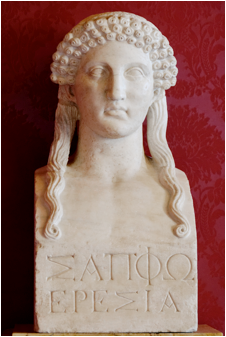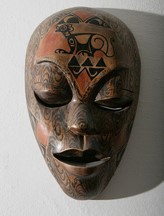Artistic Styles
The search for truth in art is not limited to making accurate representations in the classical tradition of mimesis. From viewing many of the examples which use widely different approaches, you can see how individual artists use general and identifiable styles to communicate their ideas.
Style refers to a particular kind of appearance in works of art. It is a characteristic of an individual artist or a collective relationship based on an idea, culture or artistic movement. Following is a list and description of the most common styles in art:
Naturalistic
Naturalistic style uses recognizable images with a high level of accuracy in their depiction. Naturalism also includes the idealized object: one that is modified to achieve a kind of perfection within the bounds of aesthetics and form. William Sydney Mount's painting The Bone Player gives accuracy in its representation and a sense of character to the figure, from his ragged-edged hat to the button missing from his vest. Mount treats the musician's portrait with a sensitive hand, more idealized by his handsome features and soft smile.
Abstract
Abstract style is based on a recognizable object but which is then manipulated by distortion, scale issues or other artistic devices. Abstraction can be created by exaggerating form, simplifying shapes or the use of strong colors. Let's look at three landscapes below with varying degrees of abstraction in them to see how this style can be so effective. Marsden Hartley uses abstraction to give the spare Landscape, New Mexico a sense of energy. Through the rounded forms and gesture in treatment we can discern hills, clouds, a road and some trees or bushes.

Marsden Hartley, Landscape, New Mexico, c. 1916, pastel on paper. The Brooklyn Museum, New York
Georgia O'Keeffe's Birch and Pine Trees -- Pink employs abstraction to turn the painting into a tree-filled landscape dominated by a spray of orange paint suggesting a branch of birch leaves at the top left. Vasily Kandinsky's Landscape with Red Spots, No. 2 goes further into abstraction, releasing color from its descriptive function and vastly simplifying forms. The rendering of a town at the lower left is reduced to blocky areas of paint and a black triangular shape of hill in the background. In all three of these, the artists manipulate and distort the 'real' landscape as a vehicle for emotion.
It's important to note the definition of 'abstract' is relative to cultural perspective. That is, different cultures develop traditional forms and styles of art they understand within the context of their own culture, and which are difficult for other cultures to understand. So what may be 'abstract' to one could be more 'realistic' in style to another. For example, the Roman bust of Sappho below looks very real from a western European aesthetic perspective. Under the same perspective, the African mask would be called 'abstract'. Yet to the African culture that produced the mask it would appear more realistic. In addition, the African mask shares some formal attributes with the Tlingit Groundhog Mask from Canada's west coast. It's very possible these two cultures would see the Roman bust as the 'abstract' one. So it's important that we understand artworks from cultures other than our own in the context in which they were originally created.

Roman bust of Sappho. Capitoline Museum, Rome

African mask
Questions of abstraction can also emerge from something as simple as our distance from an artwork. View and read about Fanny/Fingerpainting by the artist Chuck Close. At first glance it is a highly realistic portrait of the artist's grandmother-in law. You can zoom it in to see how the painting dissolves into a grid of individual fingerprints, a process that renders the surface very abstract. With this in mind, we can see how any work of art is essentially made of smaller abstract parts that, when seen together, make up a coherent whole.
Non-Objective
Non-objective imagery has no relation to the 'real' world – that is – the work of art is based solely upon itself. In this way the non-objective style is completely different than abstract, and it's important to make the distinction between the two. This style rose from the modern art movement in Europe, Russia and the United States during the first half of the 20th century. Pergusa Three by American artist Frank Stella uses organic and geometric shapes and strong color set against a heavy black background to create a vivid image. More than with other styles, issues of content are associated with a non-objective work's formal structure.
Source: Christopher Gildow, Washington State Board for Community and Technical Colleges, http://opencourselibrary.org/art-100-art-appreciation/ This work is licensed under a Creative Commons Attribution 3.0 License.
This work is licensed under a Creative Commons Attribution 3.0 License.